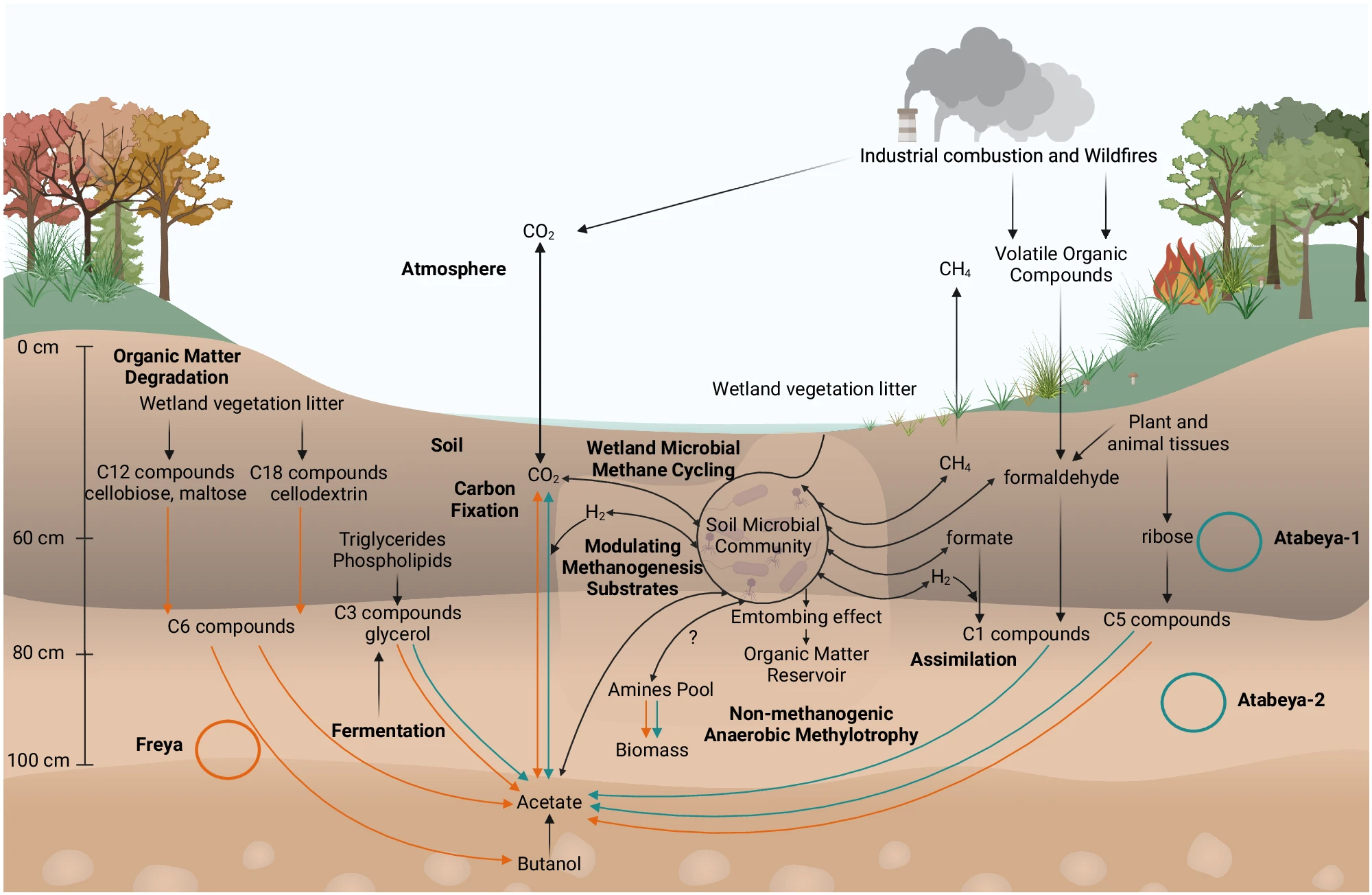Wetlands are known to produce and contribute a substantial amount of methane that is released into the atmosphere. Most of that methane gets produced from microbes in rich, and sometimes smelly, soil lacking oxygen. Researchers from Brett Baker’s laboratory at the University of Texas Marine Science Institute in Port Aransas, have experience in studying saltwater wetland soils. They lent that expertise in a new study released in Nature Communications this month that looked at the previously understudied microbes called Asgard archaea in the soils of freshwater wetlands.
The researchers focused on Asgard archaea because previous research suggested this pivotal evolutionary group can grow on various carbon compounds and use them for energy. The authors of the study reconstructed the full genomes of two types of Asgards, Atabeyarchaeia and Freyarchaeia, to examine the gene content and understand how they impact methane metabolism in wetlands.
The research revealed that the two groups of Asgards do impact methane cycling. They both produce and consume methane precursors, making their previously unknown activity important in understanding methane cycling. While their abundance in wetland soils is relatively rare, they may have an important role in methane processing. The genetic analysis done in this research discovered that they have the capacity to degrade aldehydes from various sources, such as volatile organic compounds left by California wildfires.
In addition, the authors identified Atabeyarchaeia sequences in freshwater sediment, peat, and wetland environments from previous studies and Freyarchaeia has been found in a wide diversity of environments — suggesting this metabolism is likely more widespread through archaea.
What makes the research even more impactful was that this was the first study to reconstruct a full genome for environmental Asgards from these groups. This is important because with partial reconstructions it is more difficult to describe metabolic processes without confirmation of potential artifacts or errors. The complete genomes allowed the authors to provide the first detailed metabolic description of these archaeal groups.
This research not only provides the first full reconstructed genome of Atabeyarchaeia and Freyarchaeia for future work but the detailed metabolic analysis highlights a previously underappreciated and overlooked player in methane and aldehyde cycling.
This research was supported by the Bill & Melinda Gates Foundation, University of California Dissertation-Year Fellowship, Stengl-Wyer Graduate Fellowship and University of Texas at Austin Graduate Continuing Fellowship, Innovative Genomics, Simons Foundation and the U. S. Department of Energy. The study’s co-first authors are Kathryn E. Appler and Luis E. Valentin-Alvarado with co-corresponding authors Brett Baker and Jill Banfield from The University of Texas at Austin and Marine Science Institute and University of California, Berkeley. The other authors are Valerie De Anda from The University of Texas at Austin and Marine Science Institute; Marie Schoelmerich, Jacob West-Roberts, Veronika Kivenson, Alexander Crits-Christoph, Rohan Sachdeva, and David Savage from University of California, Berkeley; Lynn Ly from Oxford Nanopore Technologies Inc; and Chris Greening from Monash University.

Overview of the metabolism of the archaea in the study within the context of wetland soils.









